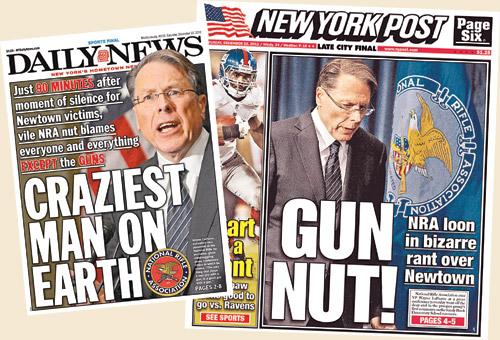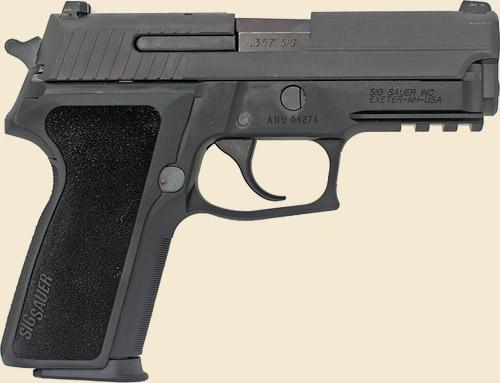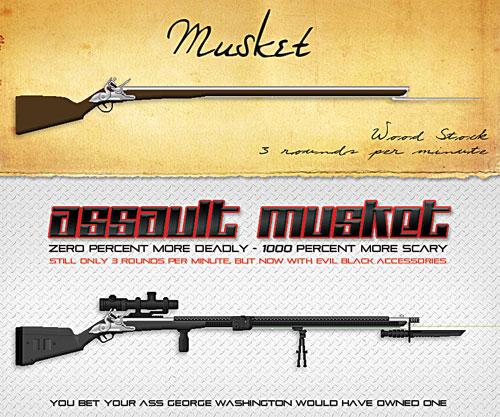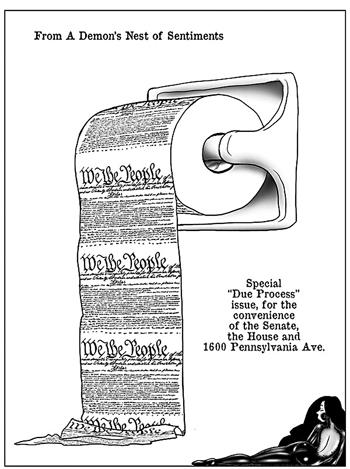By Massad Ayoob
It has been said that gun legislation and abortion are the two most polarizing issues in the United States. The former has taken the lead on both the news front and the political front of late. There is something called the 10-80-10 rule which is frequently applied to such issues: there will be 10 percent “anti” on one end and 10 percent “pro” on the opposite end of the bell curve, and in the middle will be 80 percent who have not locked into either side and are relatively open to hearing both sides of the issue.
This article is respectfully offered to the whole 100 percent, but will probably be of most value to the “80 percent.”
For starters …
The gun issue is a complicated one, a tree with many branches. Concealed carry. Open carry in public. The much-misunderstood Stand Your Ground elements. How much ammunition should people be allowed to possess, and how many of those cartridges should they be allowed to have in one of their firearms at any given time? Who should be banned from owning firearms at all (and if they’re too dangerous to own firearms, why are they allowed to roam abroad in society in the first place)? Who could possibly object to background checks being required for someone about to take possession of a gun? And what the heck is an “assault weapon,” anyway?
And then, of course, there is “the embarrassing Second Amendment.” Let’s start there.

Interpreting the Second Amendment
“A well regulated Militia, being necessary to the security of a free State, the right of the people to keep and bear Arms, shall not be infringed.”
These 27 words have been debated incessantly for a very long time. The Supreme Court of the United States, in their landmark decisions in Heller v. District of Columbia in 2008 and McDonald, et. al. v. City of Chicago in 2010, clearly established in 5-4 decisions that “the right to keep and bear arms” is an individual right, and not a collective one.
This does not stop Hillary Clinton and other anti-gun voices from claiming that they know more about Constitutional law than SCOTUS (Supreme Court of the United States), the entity created expressly to interpret the Constitution. Their argument that the word “militia” means the equivalent of the National Guard fails on many counts.
Anyone who has actually read the Bill of Rights cannot escape the fact that the entire document is dedicated to confirming the rights of individual citizens in a free country. It exceeds credulity to suggest that the Framers accidentally slipped a states’ rights issue in with the most carefully crafted document of individual rights since the Magna Carta.
Moreover, the Founders who wrote the Bill of Rights were the same people who had very fresh memories of the Revolutionary War itself. Throwing off the yoke of an oppressive government was obviously an option they wanted to keep for their descendants.
Think about it: A “National Guard” of the period would have been Tories loyal to King George, and duty-bound to obey his command to crush the revolution and kill their neighbors! Can anyone seriously believe that was what the great Americans who drafted the Bill of Rights wished to enable?
Earlier I mentioned “the embarrassing Second Amendment.” The Embarrassing Second Amendment is the title of a powerful, seminal essay by famed law professor Sanford Levinson. Though his personal views were “anti-gun,” Professor Levinson determined that yes, the scholarship of Constitutional Law indicated that the Second Amendment was, indeed, a right conferred on individual Americans … hence, his choice of title. To fully understand the issue, please read his essay, which can be found at www.constitution.org/mil/embar2nd.htm.
We often hear that the Second Amendment was written at a time when only single-shot, muzzle-loading firearms were available. A recent political cartoon appearing in the local Niagara Falls, New York, newspaper depicted the Framers of the Bill of Rights asking something like, “Should we specify that we’re talking about guns that take 10 minutes to load to fire one shot?”
Obviously, the person who wrote that hadn’t done their research; as a rule of thumb, muskets of the late 18th century could be loaded and fired at a rate of about three shots per minute. But, more to the point, it strains common sense to believe that the Framers weren’t talking about infantry small arms equivalent to those of a government’s occupying or invading force. Freedom of speech is not limited to the crude printing presses of the late 1700s. Whether we speak of transportation or washing clothes, firearms or communication, the essence of modernity is higher capacity and faster performance of the given task. When gun owners say, “If the Second Amendment doesn’t encompass fast-firing guns that hold many cartridges, the First Amendment can’t possibly encompass the Internet,” they aren’t committing reductio ad absurdum … they’re speaking the simple truth of proportionality.

The self-defense factor
However convenient a term “gun rights” may be for those on the pro-gun 10 percent, it is something of a misnomer. Guns are objects. Objects have no rights.
Rights are for people. People have civil rights. And human rights.
Lord Blackstone, the great authority on the Common Law, said that self-defense was the most fundamental of all human rights.
Let’s look at civil rights. In the United States, scholars of the law generally agree that the most egregious ruling to ever come down from the Supreme Court of the United States was the Dred Scott decision. In Dred Scott v. Sanford in 1857, Chief Justice Roger Taney wrote the majority decision which essentially upheld the institution of slavery and denied slaves’ rights as citizens. Attempting to justify that reasoning, the opinion said in part that recognizing black people as citizens “would give them the full liberty of speech in public and in private upon all subjects upon which its own citizens might speak; to hold public meetings upon political affairs, and to keep and carry arms wherever they went.”
In the years after the Civil War when the Emancipation Proclamation became a reality, a new paradigm of gun ownership was born in the South. Laws were enacted requiring only those holding permits issued by local government to be armed, the assumption being that Southern whites would elect officials who would issue those permits only to what the Ku Klux Klan called “good white men.” The legacy of that remains today in states where permits to carry loaded, concealed handguns in public are dispensed on a “may issue” basis, leaving the issuance to the discretion of the issuing authority.
That was the situation Dr. Martin Luther King, the great 20th century icon of civil rights, found when he came on the scene. Despite firebombings and death threats, his request for a permit to carry a gun to protect himself and his family was arbitrarily denied by those elected to the issuing authority of the white-dominated power structure, and it was not until some 20 years after his death that Florida passed ground-breaking reform legislation that created a national groundswell of “shall issue” permits, requiring the authorities to issue the permits to any law-abiding citizen and allowing denial of permits only upon proof that the applicant was mentally ill or was a convicted felon. It was the same century in which another icon of human rights and civil rights, Mohandas Gandhi, famously said, “Among the many misdeeds of the British rule in India, history will look upon the Act depriving a whole nation of arms as the blackest.”
Pro-gun activists are fond of saying, “When seconds count, police are only minutes away.” It’s not just a figure of speech.
The United States is generally accepted to be the home of 320,000,000 people at this time. It is likewise generally accepted that there are not more than 800,000 full-time police officers in this country. Each of those officers is presumed to work 40 hours out of every 168-hour week. In any given week, some are on vacation or on sick leave/injury leave, some are in court, some are taking as much as 40 hours of mandated in-service training, or are otherwise unavailable for immediate response to crisis.
Do the math. There simply aren’t enough police officers to put one on every doorstep 24/7, and even if that could be accomplished, it would be a police presence that no American wants.
When murderers strike, those at the scene have to get to safety and communications before they can even call the police. When they do, the dispatcher has to take the call, and transmit the message to the officers in the field. Those officers cannot say “Scotty, beam me there” — they have to travel from where they are to the danger scene. All of that takes time. Do the math, once more.
Some experts say that average response time will be 11 minutes. In remote, rural areas, and/or when there is severe inclement weather, response time will of course take longer. Sometimes, it is faster. The Sandy Hook Elementary School atrocity saw police arriving at the scene within 20 minutes. By that time, 20 little children were dead, along with half a dozen courageous but unarmed adults who died trying to protect them.
In the San Bernardino massacre in 2015, the first officers were at the scene in four minutes. This is a good response time by most realistic standards. By then, however, the radical Islamic terrorists had murdered 14 innocent victims and wounded many more.
These incidents, along with the entire history of criminal homicide, lead us to the principle of the first responder.

First responder principle
Society has emergency services — the fire service, the emergency medical service, and the police service — to deal with terrible and often life-threatening events. But, modern society has recognized that “fewer than a million of each of us to protect all 320 million of you” thing in two out of those three emergency scenarios.
In the mid-20th century, only firefighters and people who had been through life-threatening fires — i.e., those who had seen the reality of deadly danger up close and personal — maintained fire extinguishers in their homes. Well before the end of that century, it had become the paradigm to keep fire extinguishers in one’s kitchen or even in one’s car. People had come to realize that stopping the deadly danger as soon as it flared up was the best and most logical route to survival.
In the mid-20th century, if someone told their family doctor, “Teach me how to perform closed-chest cardiac massage,” which is what cardio-pulmonary resuscitation was called then, the doc would have probably answered, “Are you nuts? If you want to learn that, go to medical school — that’s what people like me are for!” By the turn of the 21st century, average Americans were considered somewhat derelict in their responsibilities to their family, and indeed to the rest of society, if they didn’t know CPR and other basic emergency first aid/first responder procedures.
Responsibly-armed American citizens see their defensive firearms as the direct analog of the fire extinguisher or the trauma kit and Automatic Electronic Defibrillator (AED): emergency safety/rescue equipment kept on hand to stop life-threatening danger as soon as it starts.
No one deems first aid equipment or fire extinguishers in the hands of private citizens to be something that should be banned. The defensive firearm is seen differently by many, including much of the media and much of the political world. There are understandable reasons for this.
You will have to look long and hard to find someone accidentally or intentionally killed with a fire extinguisher or an AED. There are, of course, cases of that happening with firearms, which are categorized at law as “deadly weapons.” No politician, no media entity, correlates owning a fire extinguisher with wanting people to burn to death, or correlates first aid capability with wanting people to suffer heart attacks or traumatic injury. The gun, however, has been widely portrayed as the very icon of violence and evil.
Which brings us to …

The element of symbolism
The current buzz term “gun violence” warrants dissection. Violence — a physical act which causes harm to something or someone — naturally has a negative connotation. One part of adulthood is understanding that violence can sometimes be benevolent. In Alfred Hitchcock’s classic movie Psycho, the knife is a murder weapon which terrorizes the audience. Yet surgeons refer to their scalpel as “the benevolent knife.” The same principle applies to the gun.
In the practice of medicine, there is a principle called “toxin-anti-toxin” — poison against poison. In chemotherapy and radiation therapy to treat cancer, healthy tissue will inevitably be damaged or even destroyed. Sometimes, amputation is required to treat the cancer. In firefighting, sometimes land or structures between the advancing wall of flame and the occupied premises the rescuers are trying to save must be bulldozed out of the way to keep from fueling the fire and making the conflagration worse.
This is why firefighters are said to “attack” the fire. This is why oncologists are said to “kill” cancer cells. The words are ugly, but what these rescuers are trying to fight is uglier, and therefore the ugliness of their strategy is justified.
When violent criminals are murdering the innocent, whether the killer is the latest real-life incarnation of Hannibal Lecter or a heavily-armed jihadi, there is simply no gentle way to stop them. The committed murderer can only be stopped with a countervailing protective force equal to his own level of malicious force.
After the Sandy Hook mass murder, the NRA’s Wayne LaPierre famously said, “The only thing that can stop a bad guy with a gun is a good guy with a gun.” The anti-gun media excoriated him for that and called him a madman. Yet those who said that, when asked what the alternative was, replied “call 9-1-1” — i.e., summon “good guys with guns.” Anti-gun Presidents past, present, and possibly future (Bill Clinton, Barack Obama, and Hillary Clinton) have publicly mocked the idea that good people with guns could stop mass murderers — yet they utter those words when surrounded by Secret Service bodyguards who are carrying .357 SIG pistols and have ready access to the “assault rifles” each of these politicians have tried their best to ban.
From the same corner of the debate comes the theory, “No mass murder has ever been prevented by one of those ‘good guys with a gun.'” History shows otherwise. Space is short for this article, but read my article in Issue #160, July/Aug 2016 (www.backwoodshome.com/defending-against-terroristic-mass-murder/) for researchable, documentable proof of lone armed “good guys” (and gals, cops, and private citizens alike) stopping mass murderers short simply because they had a gun and knew how to use it when the feces hit the fan. And the cases presented there are merely the tip of the iceberg.
“Assault weapons”
So-called “assault rifles” top the list of arms which the prohibitionists have demonized for a couple of generations now. Experts in the military world as well as the firearms industry define the “assault rifle” as one which is selective fire (i.e., can shoot on “full automatic” like a machine gun by simply holding the trigger back) and firing a cartridge at an intermediate power level. “Intermediate” in this context means more powerful than the pistol ammunition that would be fired from a submachine gun or machine pistol, but less powerful than a main battle rifle caliber such as the .30-06 round of the WWI Springfield rifle or the WWII M1 Garand, the 7.62mm NATO (.308 Winchester) of the M14 rifle adopted by the U.S. military in the 1950s, or the 8mm Mauser used by the Germans in two world wars.

The much demonized AR15 is not an assault rifle because it fires in semi-automatic mode only, requiring a separate pull of the trigger for each and every shot. The same is true of the semi-automatic clones of the Kalashnikov rifle sold over the counter in gun shops and sporting goods stores. However, because the AR15 externally resembles a true M16 and a semi-automatic Kalashnikov clone is indistinguishable at first glance from a true AK47 assault rifle, many people cannot tell the difference. It is a classic example of superficiality.
Some who wish to prohibit civilian ownership of semi-automatic rifles genuinely don’t know the difference. Of course, “ignorance is no excuse in the eyes of the law.”
However, some on the gun-banning side know the difference perfectly well and deliberately attempt to mislead and deceive the “80 percent.” A classic example is vocal anti-gunner Josh Sugarmann of the Violence Policy Center. He was famously caught saying, “Assault weapons’ menacing looks, coupled with the public’s confusion over fully-automatic machine guns versus semi-automatic assault weapons — anything that looks like a machine gun is assumed to be a machine gun — can only increase the chance of public support for restrictions on these weapons.”
The anti-gun 10 percent also exaggerates the wounding power of AR15 rifles. While available chambered for more powerful cartridges, your classic AR15 is overwhelmingly most popular in caliber .223 Remington (5.56mm NATO). Firing a 55-grain bullet at a velocity of 3,200 feet per second generates roughly 1,200 foot-pounds of energy.
For perspective, the .30-06 round — one of America’s most popular deer hunting cartridge, and the standard U.S. military rifle round for most of the first half of the 20th century — will generate nearly three times that power: over 2,900 foot-pounds of energy with a 180-grain bullet which leaves the rifle’s muzzle at 2,700 feet per second.
In some states, the .223-class rifle is not permitted for deer hunting, on the grounds that it is inadequately powerful to cleanly kill a deer. Hunters generally use the .223 as a “varmint rifle,” suitable for shooting gophers, ground hogs, and coyotes. The late Col. Jeff Cooper, USMC (ret.), dubbed the .223 a “poodle shooter” and considered it feeble as a military rifle cartridge. Many other authorities have suggested that our military needs a more powerful infantry rifle. Clearly, the ammunition the AR15 was designed to use is far from the death ray gun prohibitionists imply that it is.
What about those 30,000 gun deaths per year?
The prohibitionistic anti-gun 10 percent imply that some 30,000 unlawful gun homicides take place each year in the U.S. That’s a huge exaggeration. Early in 2016, our nation’s most anti-gun President, Barack Obama, publicly admitted that two-thirds of the estimated 30,000 deaths by gunfire per year were suicides, a figure readily confirmable through the Center for Disease Control. The CDC’s tally for 2013 was 21,175 suicides by gunshot wound compared to 11,208 total homicides by gunfire.
Obviously, any untimely death is a tragedy, but it is duplicitous to intentionally conflate suicide with murder and manslaughter. Suicide prevention is important for the many emotionally overwhelmed individuals who die by their own hand, and the gun owners’ side has taken a positive stand there. Check out the model suicide prevention program pioneered by the New Hampshire Firearms Safety Coalition and pioneered by Ralph Demicco, then owner of Riley’s Sport Shop, one of the largest retail gun shops in the Northeast (www.nhfsc.org). The program has already spread from New Hampshire and been adopted in one or another form by Vermont, Massachusetts, Rhode Island, New York, Maryland, Virginia, Kentucky, Tennessee, Alabama, Texas, New Mexico, Colorado, Iowa, Kansas, Vermont, Nevada, California, Washington, and Michigan.
None of us know how many of those self-inflicted fatal gunshot wounds were so-called “rational suicides,” people who for example had received grim prognoses for their terminal illnesses and chose self-euthanasia as an express checkout from a life now limited to excruciating pain and suffering. This brings us more into debates about issues such as death with dignity and euthanasia than discussions of gun control.
Let us not forget that those 30,000 annual “gun deaths” include justifiable homicides in self-defense by lawfully-armed citizens and by police officers acting in the line of duty. When anti-gun billionaire Michael Bloomberg assembled his tour bus road show for restrictive firearms laws, he had his spokespeople read off lists of “victims of gun violence.” Bloomberg and company received quite a backlash when the audience realized that the “victims” included violent criminals, among them one of the terrorists who perpetrated the Boston Marathon bombing and was slain in a shootout with the police.
By law, homicide is “justified” only in defense of self and others when the person shot is attempting to kill or cripple innocent people. Thus, by definition, every justifiable homicide, though counted as “gun violence” by the anti-gun 10 percent, can actually be counted as one or more innocent lives saved by firearms wielded as rescue tools by good people.
Space runs out. Truth does not. Stay tuned for more.















Having looked into, and actively taought, the history of the start of our War for Independence, here are a couple of amusing facts from that era:
The British Regulars learned their drill by memory, and had to do it in cadence when training. It took them at best between a full minute and a minute and a half to reload their muskets or rifles.
In contrast, our local militia guys trained themselfes, based on what worked. Most with any level o skill could reload in about the twenty seconds mentioned here. There are incidents that have come down to us of our guys reloading and firing so quickly the Redcoats attempting engage our guys were confinced they were outnumbered signficantly, despite the reality that THEY outnumbered US. You see, the Patriots were focussed on winning the battle and war, not following rote drills. Many of them perished because they were unable to return effective fire quickly enough.
Next, the REgulars were trained to identify a range of about a hundred yards, and not to engage any enemy combatants beyond that range. “You can’t hit them anyway, concerve your ball and powder for when you CAN hit them”. Meanwhile our guys were readily able, and did, hit their marks at ranges out to 200 yeard and well beyond. Captan Daniel Morgan’s riflemen had to pass a test to join. A shingle, about 8 x 10 inches, was tacked to a tree at a measured distance of 250 yards. Any candidate had to show up, take their own long gun, load it as HE wished, and from an offhand position crack the shingle with a first cold bore ball. Missed? Come back next year, your’e not good enough for our group. One story I love to tell involved a man “too old to fight” who saddled his great white mare and rode out paralelling Battle Road as Smith’s Regulars straggled back toward Boston and rest. The man, Hezekiah Wyman, kept himself between 200 and 300 yards from the road, WHen he was an advantgeous position he stopped, waited for the column to come into range between the trees, and POP down would go one officer. He’d reload, and pick off a second. And sometimes a third. About the time the column figured out where he was, he’s simply mount up and ride on ahead, finding another group, another position. More officers in the dirt. It is thought that this man, “too old to fight”, signlehandedly took about fifteen officers out of action that afternoon.
And last, I remember learning about a recent development in arms that did not make it into production soon enough, but the few that were made as prototypes could load up to forty .69 calibre ball, and fire them in semiautomatic mode, using compressed air as propellant, and fire all forty of them almost as fast as the operator could aim and fire.. the first true semiautomatic weapon. That took the rate of fire capability from perhaps three rounds per minute for a crack rifleman up to forty rounds per minute by an average user.
And the men who wrote that much hated Second Article of Ammendment were well aware of that semi-automatic repeating firle at the time, and wrote what they wrote anyway.
The name Girondelle somehow sticks in my musty brain, bit I could be wrong.
I don’t know any better way o explain this so called ,gun debate.. Those that don’t understand this, do not want to understand.. Our forefathers wrote the constitution to keep us safe from tyranny as well as evil people..